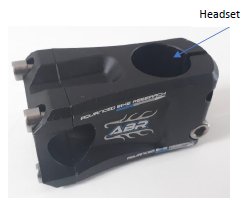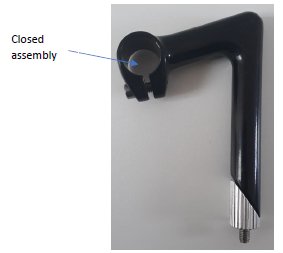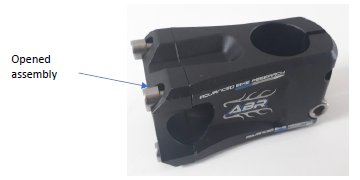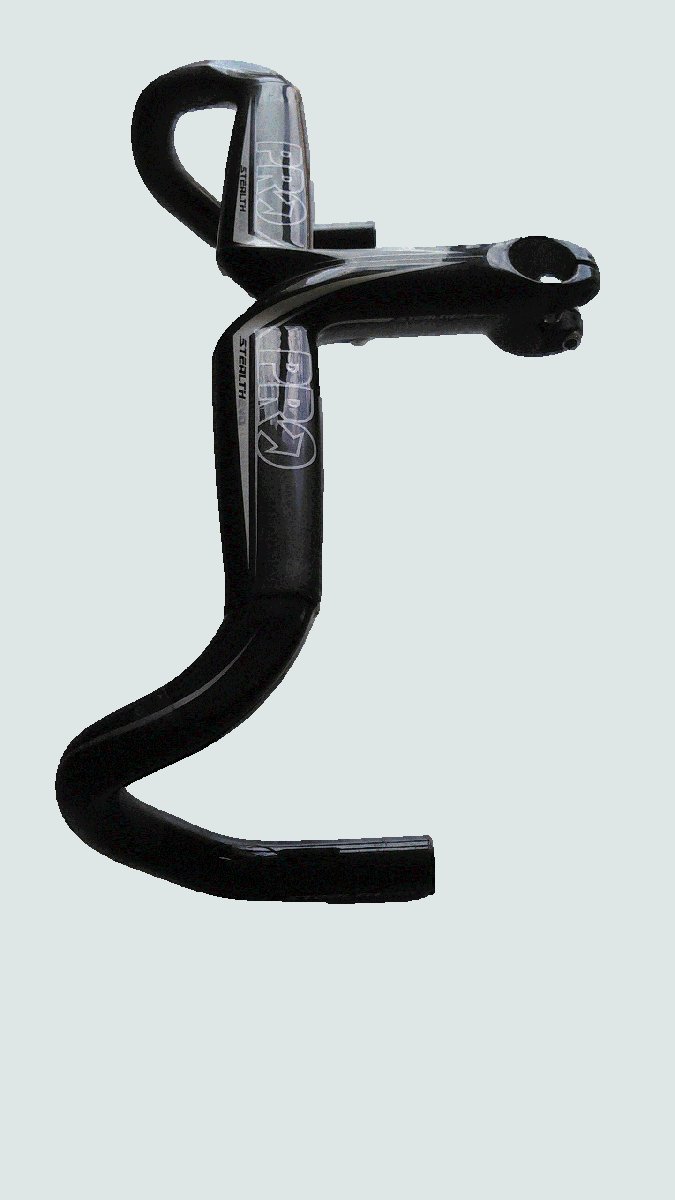Function of a bike stem:
A bike stem is a peripheral component that provides the mechanical interface between the fork tube and the bike handlebar for road bike. It can be used for bike headset adjustment (headset standard).
The bike stem is a key item in its steering and handling, responsiveness and handling.
Characteristics of a bike stem:
There are several ways to manufacture a bike stem, its technical characteristics and material will depend on its end use.
The materials :
A bike stem can be made of steel, aluminum, titanium, carbon or carbon aluminum hybrid. These materials have advantages but also disavantages, here are a few examples:
• Steel is the heaviest material but it is strong and comfortable (medium elasticity)
• Aluminum is lighter than steel
• Titanium is light, comfortable and stiff
• Carbon is a light and very rigid composite material but very fragile and sensitive to impacts following shocks
Manufacturing processes of a bike stem :
The table below lists the existing means of manufacturing a bike stem.
There are exceptions, indeed the first mountain bikes of the 90s were for some equipped with welded steel stems.
Types of bike stem fixtures:
There are several types of assembly of bike stem on a fork tube and on the bike handlebar.
Interface of the bike stem with the fork:
• Plunger mounting which is fixed by an eccentric in the fork tube, in this assembly the headset is assembled on the fork tube
• Headset type assembly in which the bicycle stem is fixed on the fork tube. This assembly is the most widely used today.

Interface of the bike stem with the handlebar:
• Closed assembly, in this case removing the handlebar requires the disassembly of the handlebar tape for road bike, grips, brake levers and handlebar gear levers to ensure its passage through the mounting of the bike stems, and it is possible to adjust the bike stem in height.

• The opening assembly, in this case the fixing on the handlebar side, is in two parts, it is therefore possible to remove the handlebar from the stem of the bike without disassembling the components installed on the handlebar.

Special case of the stem and bike handlebar combo:
Carbon handlebar stem assemblies are available on the market, these two components are made in a one part and no movement is possible between them. They are designed for a use of road cycling in competition or in a sportive way, they are not suitable for occasional riders.
The advantage of this type of assembly is the gain in weight and rigidity, on the other hand, the impossibility of adjustment requires to know perfectly the dimensions of the stem and the handlebar corresponding to its morphology and its level of use.

What are the most famous brands of bike stem?
Manufacturers have specialized in the design and manufacture of bike stems such as PRO (Shimano group), Ritchey, Race face, Time, Look cycle, Dedacciai, 3T, ITM, ...
Checklist for choosing a bike stem:
Here is a list of criterias allowing you to quickly identify the bike stem :
• Determine the diameter of the fork tube
• Identify the fixing diameter of the handlebar
• Choose the material and the manufacturing process according to its use
• Stem length
• Angle
To go further:
What is the stem on a bicycle?
What type of bicycle stems are available?
How to adjust the stem of a bicycle?
Bicycle stem diagram
Comparisons and brands of bicycle stems
What is the correct stem length?
Installing and adjusting a bicycle stem